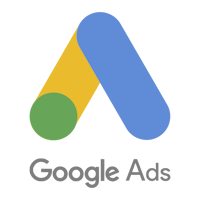Get resource data (e.g. ad_group, ad_group_ad, keyword_view
Get data for any resource
The ZappySys API Driver is a user-friendly interface designed to facilitate the seamless integration of various applications with the Google Ads API. With its intuitive design and robust functionality, the ZappySys API Driver simplifies the process of configuring specific API endpoints to efficiently read or write data from Google Ads.
Following examples shows how to Get resource data (e.g. ad_group, ad_group_ad, keyword_view from Google Ads using ZappySys API Driver. You can explore additional SQL examples for the Azure DevOps Connector.
SELECT * FROM get_resource_data
WITH (
Resource='Campaign'
--//Optional Parameters
--, Attributes='' --Keep blank to output all attributes
--OR--
--, Attributes='campaign.id~campaign.name~campaign.end_date'
--, Metrics='metrics.clicks~metrics.impressions'
--, Segments='segments.year~segments.month'
--//must supply where clause if certain segments used (e.g. date, year, month)
--, Where='segments.date between ''<<yearstart,FUN_TO_DATE>>'' AND ''<<today-1d,FUN_TO_DATE>>'' '
--, OrderBy='segments.year DESC, segments.month ASC'
)
/*
--OR-- Simple Mode (Query by Resource Name in FROM clause) - We recommend get_resource_data if possible.
Step-1: Findout all resource you can query using
select * from get_resources
Step-2: Use resource name like below (in FROM)
Example resources (If data is missing it may throw error)
select * from ad_group
select * from ad_group_ad
select * from ad_group_ad_asset_combination_view
select * from ad_group_ad_asset_view
select * from ad_group_asset
select * from ad_group_audience_view
select * from ad_schedule_view
select * from age_range_view
select * from android_privacy_shared_key_google_ad_group
select * from android_privacy_shared_key_google_campaign
select * from android_privacy_shared_key_google_network_type
select * from asset
select * from asset_field_type_view
select * from asset_group
select * from asset_group_asset
select * from asset_group_product_group_view
select * from asset_group_top_combination_view
select * from asset_set_asset
select * from asset_set_type_view
select * from bidding_strategy
select * from campaign
select * from campaign_aggregate_asset_view
select * from campaign_asset
select * from campaign_audience_view
select * from campaign_budget
select * from campaign_group
select * from campaign_search_term_insight
select * from channel_aggregate_asset_view
select * from click_view
select * from content_criterion_view
select * from conversion_action
select * from customer
select * from customer_asset
select * from customer_search_term_insight
select * from detail_placement_view
select * from display_keyword_view
select * from distance_view
select * from dynamic_search_ads_search_term_view
select * from expanded_landing_page_view
select * from gender_view
select * from geographic_view
select * from group_placement_view
select * from hotel_group_view
select * from hotel_performance_view
select * from hotel_reconciliation
select * from income_range_view
select * from keyword_view
select * from landing_page_view
select * from location_view
select * from managed_placement_view
select * from paid_organic_search_term_view
select * from parental_status_view
select * from per_store_view
select * from performance_max_placement_view
select * from product_group_view
select * from search_term_view
select * from shared_set
select * from shopping_performance_view
select * from shopping_product
select * from smart_campaign_search_term_view
select * from topic_view
select * from travel_activity_group_view
select * from travel_activity_performance_view
select * from user_location_view
select * from video
select * from webpage_view
*/Getting Started with Examples
ZappySys API Driver is a powerful software solution designed to facilitate the extraction and integration of data from a wide range of sources through APIs. Its intuitive design and extensive feature set make it an essential asset for any organization dealing with complex data integration tasks.
To get started with examples using ZappySys API Driver, please click on the following applications:
Key features of the ZappySys API Driver include:
The API ODBC driver facilitates the reading and writing of data from numerous popular online services (refer to the complete list here) using familiar SQL language without learning complexity of REST API calls. The driver allows querying nested structure and output as a flat table. You can also create your own ODBC / Data Gateway API connector file and use it with this driver.
Intuitive Configuration: The interface is designed to be user-friendly, enabling users to easily set up the specific API endpoints within Google Ads without requiring extensive technical expertise or programming knowledge.
Customizable Endpoint Setup: Users can conveniently configure the API endpoint settings, including the HTTP request method, endpoint URL, and any necessary parameters, to precisely target the desired data within Google Ads.
Data Manipulation Capabilities: The ZappySys API Driver allows for seamless data retrieval and writing, enabling users to fetch data from Google Ads and perform various data manipulation operations as needed, all through an intuitive and straightforward interface.
Secure Authentication Integration: The driver provides secure authentication integration, allowing users to securely connect to the Google Ads API by inputting the necessary authentication credentials, such as API tokens or other authentication keys.
Error Handling Support: The interface is equipped with comprehensive error handling support, ensuring that any errors or exceptions encountered during the data retrieval or writing process are efficiently managed and appropriately communicated to users for prompt resolution.
Data Visualization and Reporting: The ZappySys API Driver facilitates the seamless processing and presentation of the retrieved data from Google Ads, enabling users to generate comprehensive reports and visualizations for further analysis and decision-making purposes.
Overall, the ZappySys API Driver serves as a powerful tool for streamlining the integration of applications with Google Ads, providing users with a convenient and efficient way to access and manage data, all through a user-friendly and intuitive interface.
